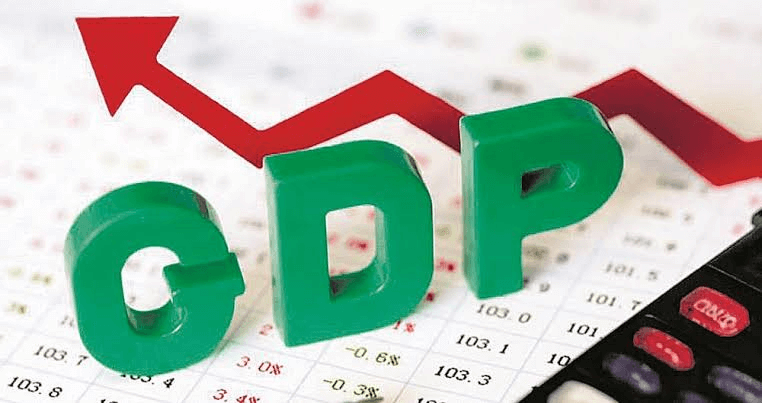Top 10 GDP CountriesThe total value of finished goods and services produced within a nation's borders over a given time period, typically a year, is calculated as the gross domestic product (GDP). The most common method for determining the size of an economy is to use GDP. GDP is most commonly measured by using the expenditure method, which calculates GDP by adding up spending on new consumer goods, new investment spending, government spending, and the value of net export( export minus import). Throughout most of the world, countries' GDPs fluctuate with the phases of the different economic cycles against a backdrop of longer-term economic growth. Over time, however, it's interesting to see that despite these ups and downs, the top economies, as measured by GDP, don't budge easily from their positions. 
Q2021 is the most recent annual data available for these countries, which shows that countries began to recover from the COVID-19 pandemic, which had a major impact on economies worldwide. Because Covid resulted in slashed energy prices, cratered tourism, lower trade volumes, and shuttered stores due to quarantines, countries experienced record-breaking declines in GDP in 2020. Measuring GDPThis article mentions several popular ways to measure GDP, all of which are drawn from the World Bank database:
Top 10 Countries by Nominal GDP at Current U.S. Dollar Exchange Rates:1. United States
The United States' economy is the largest in the world as measured by nominal GDP. The biggest contributor to that GDP is the economy's service sector, which includes finance, real estate, insurance, professional and business services, and healthcare. The United States has a relatively open economy, facilitating flexible business investment and foreign direct investment in the country. It is the world's dominant geopolitical power and is able to maintain a large external national debt as the producer of the world's primary reserve currency. The U.S. economy is at the forefront of technology in many industries, but it faces rising threats in the form of economic inequality, rising healthcare, and social safety net costs, and deteriorating infrastructure. 2. China
China has the world's second-largest nominal GDP in current dollars and the largest in terms of PPP. With annual growth that consistently outpaces that of the United States, China may be on track to become the largest economy in the world by nominal GDP in the years to come. As China has progressively opened its economy over the past four decades, economic development and living standards have greatly improved. As the government has gradually phased out collectivized agriculture and industry, allowed greater flexibility for market prices, and increased the autonomy of businesses, foreign and domestic trade and investment have taken off. Coupled with an industrial policy encouraging domestic manufacturing, this has made China the world's number one exporter. Despite these advantages, China faces some significant challenges, such as a rapidly aging population and severe environmental degradation. 3. Japan
Japan is the third-largest economy in the world. Its GDP crossed the $5 trillion mark in 2018. Strong cooperation between government and industry and advanced technological know-how have built Japan's manufacturing and export-oriented economy. Many major Japanese businesses are organized as networks of interlinked companies known as keiretsu. After the Lost Decade of the 1990s and the impact of the global Great Recession, Japan has seen an uptick in growth in recent years under the policies of former Prime Minister Shinzo Abe; however, Japan is poor in natural resources and dependent on energy imports, especially after the general shutdown of its nuclear power industry following the 2011 Fukushima disaster. Japan has also struggled with a rapidly aging population. 4. Germany
Fourth among world economies is Germany. Germany is also Europe's largest economy. Germany is a top exporter of vehicles, machinery, chemicals, and other manufactured goods and has a highly skilled workforce. Germany, however, faces some demographic challenges to its economic growth. Its low fertility rate makes replacing its aging workforce more difficult, and its high levels of net immigration strain its social welfare system. 5. The United Kingdom
The United Kingdom has the fifth-largest economy in the world. The U.K. economy is driven by its large service sector, particularly in finance, insurance, and business services. The resolution of Brexit has greatly complicated the nation's extensive trading relationship with continental Europe after the 2016 vote to leave the European Union (EU). As of Jan. 31, 2020, the U.K. is officially not a member of the EU, but contentious negotiations over trade relations between the two are ongoing. 6. India
India is the sixth-largest economy in the world. Because of its large population, India has the lowest per-capita GDP on this list. India's economy is a mixture of traditional village farming and handicrafts alongside booming modern industry and mechanized agriculture. India is a major exporter of technology services and business outsourcing, and the service sector makes up a large share of its economic output. Liberalization of India's economy since the 1990s has boosted economic growth, but inflexible business regulation, widespread corruption, and persistent poverty pose challenges to ongoing expansion. 7. France
The GDP of France is ranked seventh in the world. France receives the most tourists of any country each year, which makes the tourism sector a significant industry. In its mixed economy, which spans a variety of industries, France has a large number of private and semi-private businesses. However, the government continues to play a significant role in a number of important industries, including the production of electricity and defence. The French government's dedication to economic intervention in support of social equality also poses some difficulties for the country's economy, including a rigid labor market with high unemployment and a high level of public debt compared to other developed economies. 8. Italy
Italy has the eighth-largest GDP in the world. It also has the third-largest economy in the eurozone. The economy and level of development in Italy differ significantly by region, with the north having a more advanced, industrial economy and the south having a less developed economy. Due to a very high public debt, an ineffective court system, a weak banking industry, an ineffective labour market with persistently high youth unemployment, and a sizable underground economy, Italy's economy has been growing slowly for years. 9. Canada
Canada has the ninth-largest economy in the world. The third-largest proven oil reserves in the world are in Canada, which also has a well-developed energy extraction industry. The manufacturing and service sectors in Canada are also impressive, and they are primarily based in urban areas close to the U.S. border. The United States and Canada have a free trade agreement, so each year, three-quarters of Canadian exports go there. Due to its close ties to the US, Canada has developed largely in tandem with the largest economy in the world. 10. South Korea
Rounding out the top 10 economies in the world by GDP is South Korea. The economy of South Korea is a success story of the 20th century and is now firmly established as an advanced, industrial economy. South Korea, which is well-known for its export-led growth strategy and the dominance of its chaebols (large business conglomerates), has established a network of free trade agreements over the past few decades that cover 58 nations and represent more than three-quarters of the global GDP. It is a significant manufacturer and exporter of electronic devices, telecommunications gear, and automobiles. With this progress, however, South Korea also now faces some of the same challenges that many other advanced economies are dealing with, including slower growth and an aging workforce.
Next TopicTop 10 GDP Countries 2022
|
 For Videos Join Our Youtube Channel: Join Now
For Videos Join Our Youtube Channel: Join Now
Feedback
- Send your Feedback to [email protected]
Help Others, Please Share










